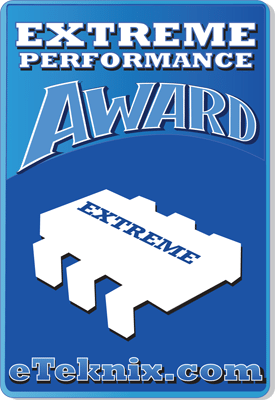SuperMicro C7H170-M (LGA 1151) Motherboard Review
John Williamson / 9 years ago
Final Thoughts
Pricing
The SuperMicro C7H170-M isn’t available in the UK or Europe at the time of review and completely out of stock throughout the USA. This is probably due to the furore surrounding non-K CPU overclocking on this particular motherboard. Hopefully, it will be restocked very soon as other motherboard vendors could very easily enable BCLK overclocking via a BIOS update. When it does return to retail, the motherboard should be priced around the $160 mark. In terms of value, it’s a difficult one to recommend for most people as Z170 motherboards offer full multiplier-based overclocking for a similar asking price.
Overview
SuperMicro is a pioneer of server technology and anything they produce has a seal of quality. This is certainly the case with the C7H170-M which offers dependable power circuitry to maximize the overclocking ability of your CPU. The motherboard’s H170 chipset is quite restricted, and doesn’t allow for a simple frequency boost by entering the multiplier and core voltage. In theory, Intel wanted to limit all overclocking ability to K variant CPUs and make people purchase the pricier Z170 platform. However, this motherboard clearly shows that H170 overclocking is achievable even if it requires a slightly higher skill level. Nevertheless, with a patient approach, it shouldn’t be too difficult to reach an impressive frequency boost.
Most of the publicity surrounding BCLK overclocking revolves around frequency improvements on locked multiplier CPUs. However, it’s easy to forget that this also means any H170 motherboard with the correct BIOS can attain an overclock which makes Z170 alternatives a less enticing proposition. Don’t get me wrong, Z170 motherboards still have the benefits of higher frequency memory, simple overclocking and enhanced connectivity. Although this latest development might make enthusiasts think twice about dismissing the cheaper H170 platform.
The SuperMicro BIOS is going to divide opinion and greatly depends on your proficiency with technical terminology. If you enjoy tinkering with every small aspect and want to learn what each parameter does then the BIOS will suit your requirements perfectly. However, it can be daunting at first due to the huge array of options which are explained quite poorly. For example, SuperMicro should put on the right hand side a basic synopsis of each BIOS setting so the end-user can make a better judgement what to alter.
On another note, I would like to see more embedded profiles to save overclocking settings and compare custom configurations. Navigating around the BIOS isn’t the most logical experience but it’s far from being unusable. It only took a few minutes before finding my way around the BIOS and it didn’t appear to favour any particular control scheme. At first the mouse seemed like best method to access each tab, but it’s just as quick to use the keyboard.
In terms of the motherboard layout, SuperMicro has done an excellent job and incorporated a wealth of USB connectors, overclocking themed buttons, impressive audio design and optimal PCI-E layout. During the overclocking procedure, you will need to use the Clear CMOS and Power button on a regular basis. That’s why they are such an important inclusion which makes overclocking much more enjoyable. It removes the frustration factor when having to mess about with jumpers, or remove the internal battery, just to attempt a specific BCLK figure with tweaked values. The most surprising aspect is the audio, which features remarkably low latency and good clarity.
From a visual standpoint, the motherboard’s theme isn’t too flashy and appeals to a gaming audience without moving too far away from SuperMicro’s server roots. What I mean by this is, any kind of over-the-top design might create a negative perception and blend into the other models on the market. It’s important for SuperMicro to retain their professional, quality feel while offering visually appealing products. This is a difficult balancing act but I feel they’ve mastered it quite well on this particular motherboard.
Finally, the motherboard attained the best stock results on Intel’s H170 platform. Admittedly, this is only the second sample we’ve received so far, but there will be many more added in the coming weeks. Once overclocked, I was surprised how close the motherboard got to Z170 products despite having a lower clock speed. Clearly, the H170’s 2133MHz limit made a huge difference in memory benchmarks and it’s unfair to compare motherboards which utilize different speeds. What we can do is analyse products on an identical chipset. One area of disappointment was the linear write speeds which could have been greatly improved for each of the testing storage devices. These aren’t within a margin for error, and larger than I anticipated. On the other hand, a strange background task might have interfered and been using a small percentage of disk utilization.
Pros
- Attractive heatsink design
- Extremely detailed BIOS
- Good audio
- High-end power delivery
- Large BCLK overclocking headroom
- Manual buttons to speed up the overclocking process
- Server-grade reliability
- Superb connectivity options on the rear I/O
Cons
- Expensive for a H170 motherboard
- Linear write results were underwhelming
- Poor worldwide availability
Neutral
- No SATA Express, but generally not needed due to M.2 and PCI-E drives
- Software package is lacking but this might not be a concern to some consumers
“The SuperMicro C7H170-M brings overclocking to non-K series CPUs and the H170 platform while offering server-grade reliability. It may be expensive, but it certainly impresses overall.”

SuperMicro C7H170-M (LGA 1151) Motherboard Review
Thank you SuperMicro for providing us with this sample.



















